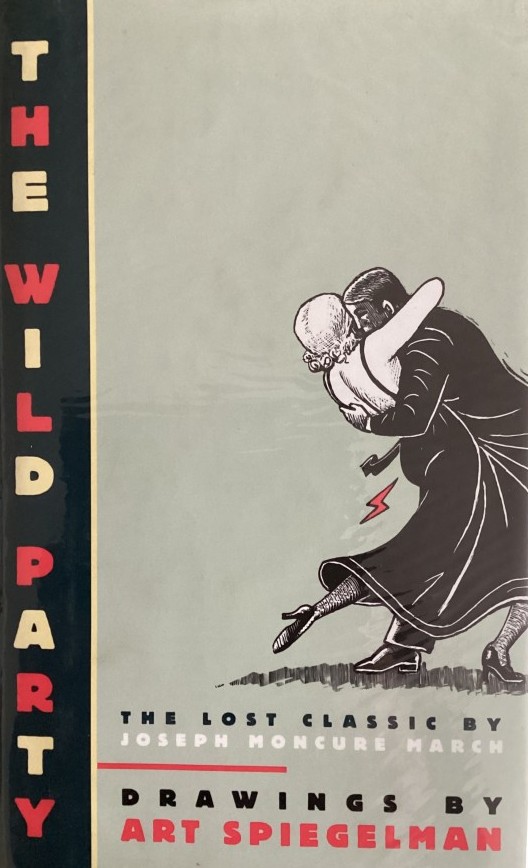Inspiring Older Readers
 posted on 04 Apr 2024
posted on 04 Apr 2024
The Wild Party by Joseph Moncure March, illustrated by Art Spiegelman
Joseph Moncure March (1899 – 1977) was born in New York and after the First World War he started his career in magazines. By 1925 he had become the managing editor of The New Yorker – a post he retained until leaving to focus on his career as an author. In this guise he produced what are now considered seminal works of Jazz Age literature – The Wild Party (1926) and The Set-Up (1928).
Both of these were long narrative poems and gained him some notoriety at the time – The Wild Party was banned in Boston and struggled to find a publisher because of the sex, drugs and alcohol that feature prominently. The Set-Up was less racy in terms of content but no less explosive – focussing on corruption in the boxing business.
Both have had film adaptations and March tried to rewrite them in the 1960s to make the content more palatable – something that almost everyone considered a mistake and probably contributed to the books slipping out of print and ultimately being thought of as ‘lost classics’.
Artist, Art Spiegelman has gone back to the original text to bring The Wild Party to a wider audience and has provided his own inimitable illustrations. He's also written an insightful introduction which perfectly captures what March was trying to do in this story of Twenties dissolution:
“Joseph Moncure March’s Wild Party is a hard-boiled, jazz-age tragedy told in syncopated rhyming couplets. It has a mnemonic tenacity, if not the wholesomeness, of a nursery rhyme, and to read it once is to get large shards of it permanently lodged in the brain.”
March draws on the language of newspapers and music lyrics, with these being as influential as the shadow of Robert Fost who had seen March as something of a protégé when he was at college.
The action of the poem takes place over one broiling hot afternoon, night and early morning when the languid, beautiful but bored Queenie is lounging, naked, on her bed in an apartment she shares with the brutality-inclined Burr, her beau of the moment, with whom she has an abusive and explosive relationship. The threat of physical violence always seems close to the surface and an explosion - tragic or farcical - on the cards from moment to moment.
Almost as a way of declaring peace for a while, they decide to throw a party.
By midnight the apartment is heaving with guests that March has great fun introducing us to. There’s not much going on here that fits current ideas of respect to minority interests – the language used about gay characters and Jews is never vicious but it relies quite heavily on stereotypes that have been around for far too long. There’s also a fourteen-year-old who finds herself the target of less than innocent attention as the party spirals into a booze-fuelled nightmare. So it’s easy to see why this poem caused such a brouhaha when it first appeared.
But the central story involves Queenie – a women looking in the wrong places for real love – and Burr, a man who wants her as a possession. But there's a new kid on the block, Mr Black, who convinces himself he’s in love with Queenie (although we suspect the two new lovers are actually less in love and more in lust). The eternal triangle is heading for tragedy – a tragedy that whilke it is about them is also about the kind of society that produced them and all those in that wild party who are desperately trying to keep reality at bay.
For those familiar with Art Spiegelman’s classic graphic novel of the holocaust, Maus, the style of artwork will be very familiar – and always brilliant. His drawings pepper the book throughout utilising part and full page back and white drawings that help bring the cast of characters alive again.
Fortunately, this edition of The Wild Party can be easily found on the second-hand market for well under £10 and it’s a real treat.
Terry Potter
April 2024

